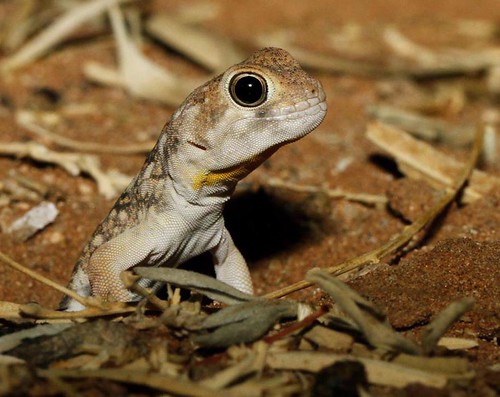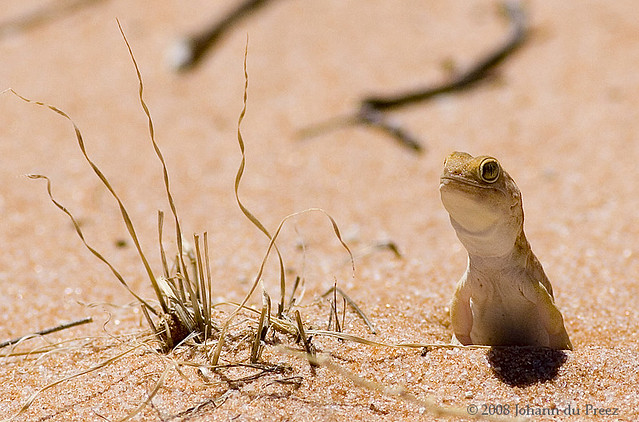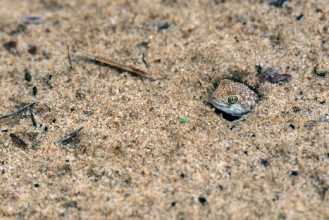Post by Ceratodromeus on Jul 3, 2015 0:05:32 GMT 5

Scientific classification:
Kingdom: Animalia
Phylum: Chordata
Subphylum: Vertebrata
Class: Reptilia
Order: Squamata
Suborder: Sauria
Infraorder: Gekkota
Family: Gekkonidae
Subfamily: Gekkoninae
Genus: Ptenopus
Species: P. Garrulus
Recognized subspecies:
- Ptenopus garrulus maculatus
- Ptenopus garrulus garrulus
Description:
The common barking gecko is a small desert dwelling species. The head is robust in proportions, and the eyes are relatively large. Body coloration is typically a mottled brown with white speckling, and shades of purple can be found on most individuals; predominately barring on the lower jaw.The throat is yellow, but only in males and the belly white. Sexual dimorphism in body size is not apparent, but males have larger heads then females.{1}. Healthy adults measure anywhere between 40-50mm(1.57-1.96in) in snout- vent length; and weights of 2-4g{2}.Males average a snout-vent length of 49mm(1.9in), while females average a snout-vent length of 44mm(1.7in). The largest documented specimen measured 60mm(2.3in) in snout-vent length.{1}Like the common name suggests, this lizards produce vocalizations likened to that of a small dog barking. These calls are to attract mates, or drive off other males.{3}

Geographic range & habitat use:
This lizard is endemic to the arid deserts of Southern Africa, where it spends most of its day in burrows it has crafted. These burrows can be found in loose soils, and can extend to as much as 38cm(14.9in) below the surface.

Dietary habits:
This lizard is predominantly a sit-and-wait feeder, sitting at the mouth of its burrow to ambush insects that wondering. At other times, this gecko emerges from its burrow at night, when the sands of the deserts are cooler, to forage for insects. P. Garrulus feeds heavily on termites, beetles, and ants - which make up most of its diet. Other documented prey animals include centipedes, and members of aranae.{1}

Reproduction:
Males attain sexual maturity at 36mm(1.4in) total length, females at 31mm(1.2in){4}. Mating occurs in the early summer(May-June), with eggs bathing in the fall(October). Clutch size typically consists of a singular egg, though on the rare occasion two eggs are laid.
Females may produce more then one clutch in a season.
References:
{1}Hibbitts, Toby J., et al. "Ecology of the common barking gecko (Ptenopus garrulus) in southern Africa." Journal of Herpetology 39.3 (2005): 509-515.
{2}Pianka, Eric R., and Raymond B. Huey. "Comparative ecology, resource utilization and niche segregation among gekkonid lizards in the southern Kalahari." Copeia (1978): 691-701.
{3}Hibbitts, Toby J., Martin J. Whiting, and Devi M. Stuart-Fox. "Shouting the odds: vocalization signals status in a lizard." Behavioral Ecology and Sociobiology 61.8 (2007): 1169-1176.
{4}Hibbitts, Toby Jarrell. Ecology and sexual selection of the common barking gecko (Ptenopus garrulus). Diss. Faculty of Science, University of the Witwatersrand, Johannesburg,


